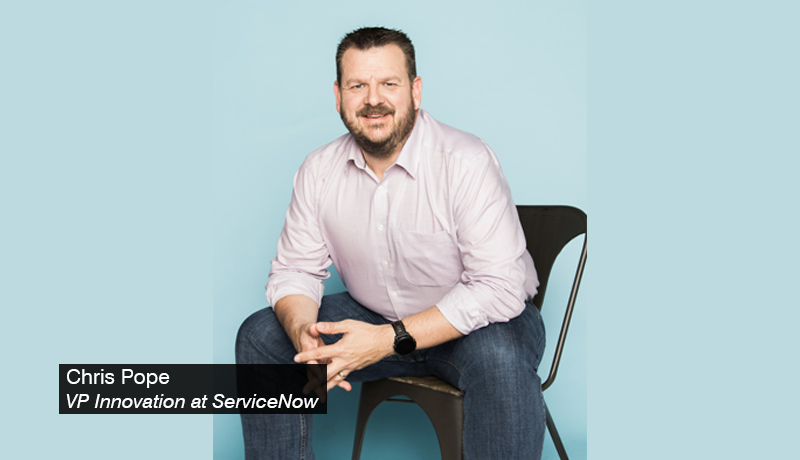
For the July 2021 Special Feature on ‘Bridging The Gap Between Technology And Business,’ Chris Pope, VP Innovation, ServiceNow, was interviewed by Rabab Zehra, Executive Editor of TECHx Media, to learn more about ServiceNow’s vision of a “perfect” digital workflow experience, business continuity, channel partner ecosystem, and impending industry trends.
Chris: Simply put, it’s a series of steps taken or performed — by humans, machines or a combination of the two — to achieve an outcome/complete a piece of work. The perfect workflow removes complexity and manual errors, ensuring that the process is as seamless and accurate as possible. That being said, the inverse is also true in that, we need to ensure that the right controls are in place to catch and enable analysis should the workflow not deliver on its promise. Efficiency, productivity, automation, scalability and reliability are all realistic outcomes of the ‘perfect’ workflow.
Chris: The entire topic of business continuity has and is being redefined almost weekly, not only because of the shift in workplace practices, but also in employee expectations. Historically, we have obsessed with the reliability of systems and platforms — not to say that still isn’t true — but the adoption of highly available/scalable public cloud has alleviated many of the challenges. With a massively distributed workforce across the globe, the resilience of our employees is more important than ever before. In support of these employees, it’s up to technology organisations to provide the right solutions that remove complexity while delivering consumer like experiences.
ServiceNow digitises workflows, in a low-code/no-code environment, giving organisations the ability to quickly and easily implement or replace a manual process in a matter of hours/days. This changes the ability of IT to respond rapidly to new and changing business requirements.
Chris: Our partners are crucial to our customers’ success. They play a pivotal role across the globe in partnering with customers on their ServiceNow journey, initially providing resources to support implementation, and then rapidly accelerating value-add through adoption and after-sales service support. ServiceNow offers multiple levels or types of partner programs from ISV/OEM through to full-scale platform implementation and digital transformation. There are partners of all shapes and sizes spread across the globe, with the ability to deliver remotely as well as in-person. Training and education play a key role in our customers’ success, so providing the same information and education to our partners, as we do to our employees, is of paramount importance.
Chris: Hyper automation will play a massive role in the coming years. For the last 3-5 years, some of these solutions have been in their infancy and not seen mainstream adoption in the enterprise. But similar to how some of these technologies have influenced us in our home lives, its time they moved into the enterprise as well. In the next few years this pace will accelerate and technologies like RPA, AI/ML, Bots, Smart Analytics will be embedded in all that we do, to the extent that we won’t really notice that they are even there.
Experience will always be a big driver for enterprise tech, but fit for use and purpose are also huge influencers so just having a pretty UI is not enough, or relevant in many situations. Making information and data — that is relevant and contextual — available to employees at their fingertips and automation-on-demand are just some of the key enablers for the future workforce.